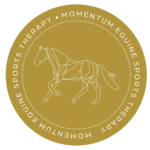Scientific Research
Massage
National Library of Medicine
The relationship between massage to the equine caudal hindlimb muscles and hindlimb protraction
PEMF
National Library of Medicine
A Novel Method to Achieve Precision and Reproducibility in Exposure Parameters for Low-Frequency Pulsed Magnetic Fields in Human Cell Cultures
Hindawi
The Efficacy of Pulsed Electromagnetic Fields on Pain, Stiffness, and Physical Function in Osteoarthritis: A Systematic Review and Meta-Analysis
National Library of Medicine
Enhancing cartilage repair with optimized supramolecular hydrogel-based scaffold and pulsed electromagnetic field
National Library of Medicine
A study of the effects of pulsed electromagnetic field therapy with respect to serological grouping in rheumatoid arthritis
NATIONAL LIBRARY OF MEDICINE
Electromagnetic fields influence NGF activity and levels following sciatic nerve transection
National Library of Medicine
An experimental study of the effects of pulsed electromagnetic field (Diapulse) on nerve repair
National Library of Medicine
Adjuvant treatment of knee osteoarthritis with weak pulsing magnetic fields. Results of a placebo-controlled trial prospective clinical trial
NATIONAL LIBRARY OF MEDICINE
The use of magnetic field for the reduction of inflammation: a review of the history and therapeutic results
National Library of Medicine
Evaluation of treatment with a pulsed electromagnetic field on wound healing, clinicopathologic variables, and central nervous system activity of dogs
Frequently Asked Questions
Equine Bodywork Q&A
Initial documentation of your horse’s confirmation and muscling symmetry, a full report after each session which is e-mailed to you with instructions on exercises, stretches, and things to work on to extend the benefits.
Any age. Introducing body work to a young horse has benefits. For example, getting a solid baseline for their “normal” body before they are asked to work. Young horses will also benefit from being touched all over during a bodywork session. Older horses, geriatrics, have most likely adapted to conditions that they have been living with. The goal with bodywork on older horses is to keep them comfortable and functionally sound, not to “fix” them at an older age since their body has already adapted to chronic issues they have.
Most horses that are in a regular bodywork program will not be sore. It is good for them to have at least a 10 minute walk within two hours after their session.
Preferably after exercise or on a day off. A walk and/or turnout is recommended within two hours after the session. If your horse is on a regular bodywork schedule, normal exercise may resume the following day.
Preferably not on the same day as dentistry and vaccines. I recommend bodywork to resume at least 3 days after joint injections.


